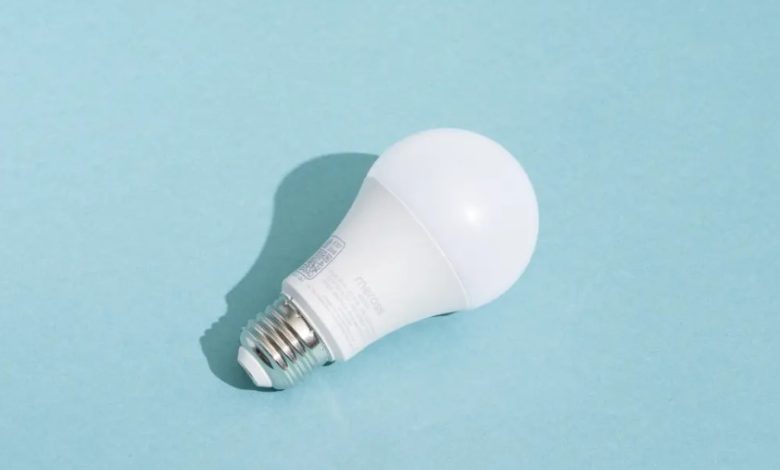Illuminate Your Business: A Comprehensive Commercial Lighting Buyer’s Guide

When it comes to running a successful business, lighting plays a crucial role. Proper commercial lighting not only enhances the visual appeal of your establishment but also creates a welcoming atmosphere for customers and employees alike. However, navigating the world of commercial lighting can be overwhelming, with numerous options available. In this comprehensive buyer’s guide, we will explore the key factors to consider when selecting commercial lighting fixtures. From understanding different types of lighting to exploring energy-efficient options, this guide will help you make informed decisions to illuminate your business effectively.
Assessing Your Lighting Needs
Before delving into the details, it is critical to examine your lighting requirements. Consider the purpose of each area within your business premises. Are you looking to create an inviting ambiance for a retail store, or do you require task-oriented lighting for an office environment? Identifying the objectives of each space will guide you in selecting the appropriate lighting fixtures and luminosity levels. Additionally, take note of any specific requirements or regulations relevant to your industry, such as lighting standards for healthcare facilities or food service establishments.
Understanding Lighting Terminology
To make informed decisions when purchasing commercial lighting fixtures, it’s crucial to familiarize yourself with industry-specific terminology. Some common terms include:
- Lumens: Lumens measure the total amount of light emitted by a source. It indicates the brightness of a fixture and helps determine its suitability for different spaces.
- Color Temperature: Expressed in Kelvin (K), color temperature refers to the warmth or coolness of light. Lower Kelvin values produce warmer, more yellowish light, while higher values result in cooler, bluish light.
- CRI (Color Rendering Index): CRI measures how accurately a light source reveals colors compared to natural light. A higher CRI indicates better color rendering.
- Wattage: Wattage denotes the power consumption of a lighting fixture, indicating its energy efficiency.
Exploring Lighting Fixture Types
- Ambient Lighting: Ambient lighting provides overall illumination, creating a comfortable and well-lit environment. Common fixtures for ambient lighting include chandeliers, pendant lights, recessed lights, and track lighting. Consider the height of your ceilings, the desired light distribution, and the architectural style of your space when choosing ambient lighting fixtures.
- Task Lighting: Task lighting is focused lighting that enhances visibility for specific activities such as reading, cooking, or working on a computer. Desk lamps, under-cabinet lights, and adjustable spotlights are commonly used as task lighting fixtures. Determine the tasks performed in each area of your business to select appropriate task lighting options.
- Accent Lighting: Accent lighting is used to highlight specific objects, artwork, or architectural features, creating visual interest and adding depth to your space. Track lighting, wall sconces, and picture lights are popular choices for accent lighting. Consider the size and shape of the objects you wish to highlight when selecting accent lighting fixtures.
- Decorative Lighting: Decorative lighting fixtures serve both functional and aesthetic purposes, often becoming a focal point in space. Chandeliers, pendant lights, and ornate wall sconces are examples of decorative lighting options. Ensure that the design and style of decorative fixtures align with the overall theme of your business.
Energy Efficiency And Sustainability
In today’s environmentally conscious world, energy efficiency and sustainability are paramount. Opting for energy-efficient lighting not only reduces your carbon footprint but also saves on energy costs in the long run. Look for lighting fixtures with the ENERGY STAR label, which signifies compliance with energy efficiency standards. LED (Light Emitting Diode) lighting is a popular choice for commercial applications due to its longevity, energy efficiency, and versatility.
Lighting Control Systems
In addition to selecting the right fixtures, implementing lighting control systems can further enhance the efficiency and functionality of your commercial lighting. Lighting control systems allow you to adjust and automate lighting levels based on occupancy, time of day, or specific requirements. Some common lighting control options include:
- Dimmers: Dimmers enable you to adjust the brightness of your lighting fixtures, providing flexibility and the ability to create different moods or settings.
- Occupancy Sensors: These sensors detect the presence or absence of people in a room and automatically turn the lights on or off accordingly. They are particularly useful in areas with sporadic usage, such as restrooms or storage spaces.
- Daylight Harvesting: Daylight harvesting systems utilize sensors to measure the amount of natural light entering a space and adjust the artificial lighting levels accordingly. This helps reduce energy consumption during daylight hours.
- Time Scheduling: Time scheduling allows you to program lighting to turn on or off at specific times, ensuring lights are only active when needed. This feature is beneficial for businesses with consistent operating hours.
Considering Maintenance And Longevity
When investing in commercial lighting fixtures, it is important to consider their maintenance requirements and longevity. LED fixtures are known for their extended lifespan, requiring less frequent replacement compared to traditional lighting options. Additionally, LEDs are durable and resistant to shock and vibration, making them suitable for various commercial environments. Regular cleaning and maintenance, such as dusting fixtures and checking for loose connections, will ensure optimal performance and longevity.
Budgeting And Return On Investment
While investing in quality commercial lighting is crucial, it is equally important to consider your budget and the potential return on investment (ROI). LED lighting, despite being slightly more expensive up front, offers significant energy savings over time, resulting in lower operational costs. Calculate the ROI based on energy savings, reduced maintenance expenses, and potential rebates or incentives for energy-efficient lighting installations. Prioritize areas with higher energy consumption or longer operating hours for lighting upgrades to maximize your ROI.
Conclusion
Choosing the right commercial lighting fixtures for your business is a multifaceted process that requires careful consideration of your specific needs, energy efficiency, lighting control systems, and long-term maintenance. By understanding the different types of lighting fixtures, their purposes, and the terminology associated with them, you can make informed decisions that will effectively illuminate your business. Remember to factor in energy efficiency, sustainability, and potential return on investment to create an inviting, productive, and environmentally responsible workspace that aligns with your business goals.



